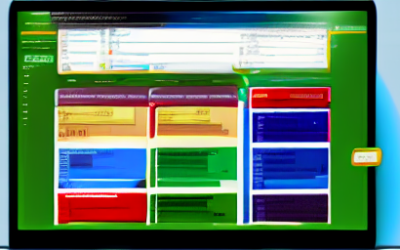High availability IT (HA IT) is a system design approach and associated service implementation that ensures a pre-defined level of operational performance will be met during a contractual measurement period. HA IT is typically used to describe the ability of an IT system to remain operational for a period of time without interruption. This is especially important for systems that are mission-critical and must remain active for long periods of time.
Tech Blog
Tech Insights, Information, and InspirationE-commerce Development
E-commerce development is the process of creating and managing an online store for selling products or services. It includes designing the website, developing the store, setting up the payment processing systems, integrating the store into the business’s operations, and managing the store.
What is .Net Framework?
What is .NET Framework? It is a software development platform developed by Microsoft that runs primarily on Microsoft Windows. It includes a large library of coded solutions to common programming problems and a virtual machine that manages the execution of programs written specifically for the framework. The .NET Framework supports multiple programming languages, including C#, Visual Basic, C++, and F#.
ERP Software Solutions
Enterprise Resource Planning (ERP) software solutions are comprehensive business management systems designed to help companies of all sizes streamline their operations and improve efficiency. ERP software solutions provide a unified platform for capturing, storing, and managing data from all areas of the organization, including finance, inventory, purchasing, sales, and more.
Procurement Management Systems
Procurement management systems are computerized systems that help organizations streamline the procurement process. They are used to manage the purchase of materials, goods and services from vendors and other external parties. The systems are designed to effectively manage the entire procurement cycle from planning, purchasing, receiving and payment to tracking and reporting.
Development: CI/CD Pipeline
CI/CD pipeline which stands for Continuous Integration/Continuous Delivery. It is a set of practices designed to automate the release process of software applications. The CI/CD pipeline is the process of automating the release process of software applications, from development to production.
Twelve-Factor App Methodology
The Twelve-Factor App Methodology is a set of guidelines and best practices used to develop software-as-a-service (SaaS) applications that are highly scalable, maintainable, and portable. The twelve factors are a set of principles that aim to optimize application development and deployment
Software Development as a Service
Software Development as a Service (SDaaS) is a model of software development that involves the delivery of software development services to customers over the internet using a cloud-based platform. SDaaS eliminates the need for organizations to hire in-house software developers, freeing up time and resources for other tasks.
WMS Software
Warehouse Management Systems (WMS) is a software application that is used to manage and optimize warehouse operations. WMS systems are used to automate and streamline the day-to-day activities involved in managing and controlling inventory, such as receiving, shipping, and tracking orders.
Order Management Systems (OMS)
Order management systems (OMS) are software solutions that are used to manage the entire order process from order entry to fulfillment and invoicing. These systems are designed to automate, streamline, and organize the entire order process. They can be used to manage customer orders, track inventory, process invoices, and generate reports.
Get In Touch
UseTech Design, LLC
TROY, MI • BLOOMFIELD HILLS, MI
Call or text +1(734) 367-4100










